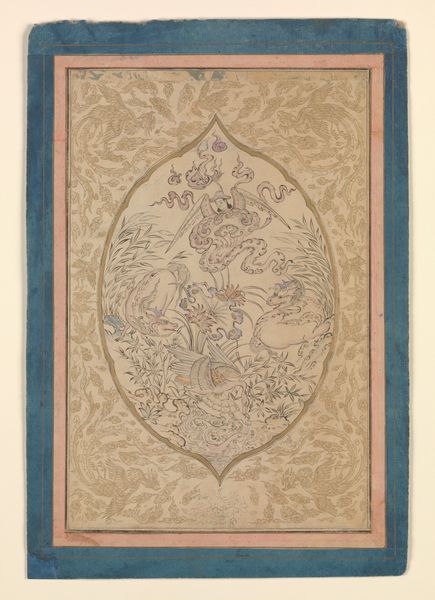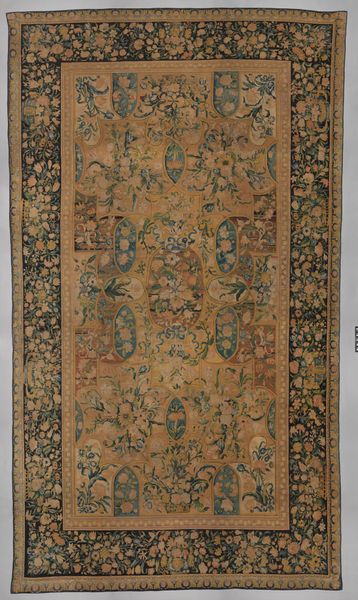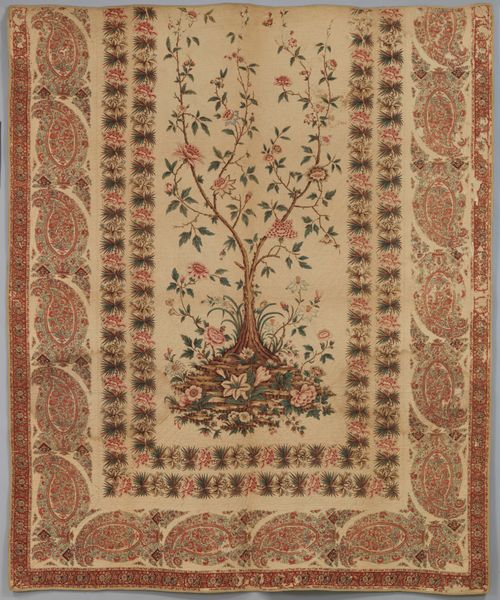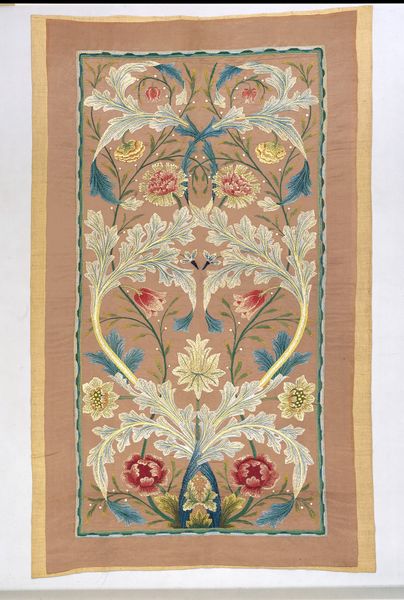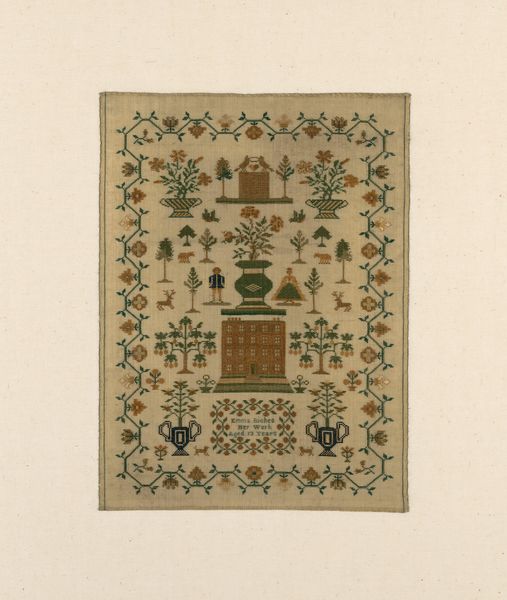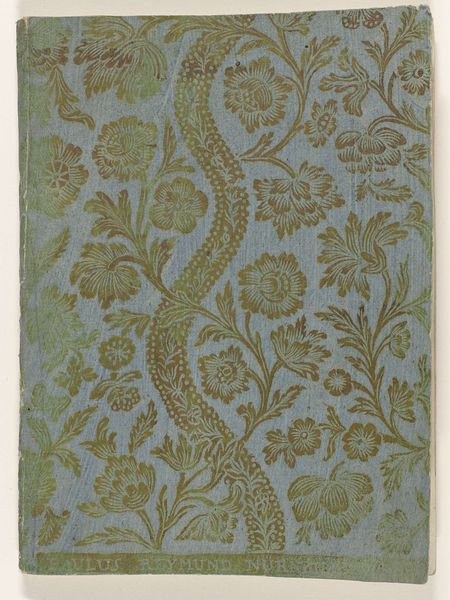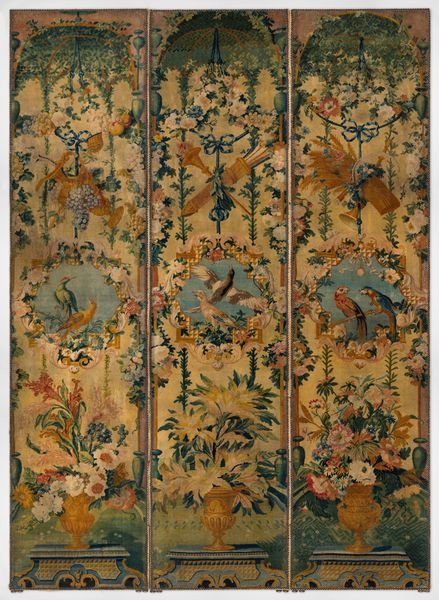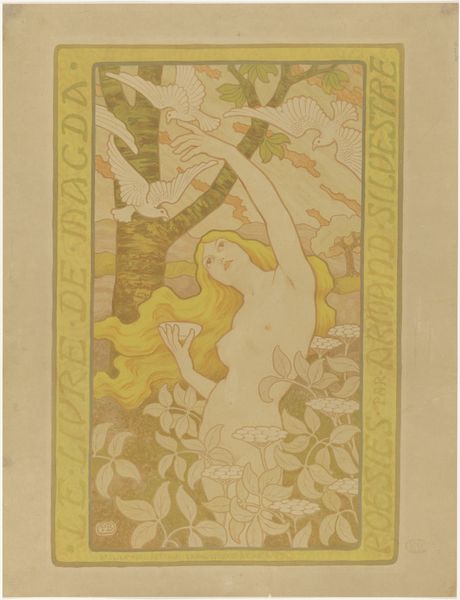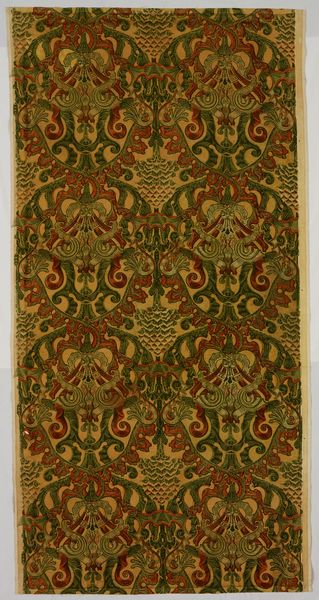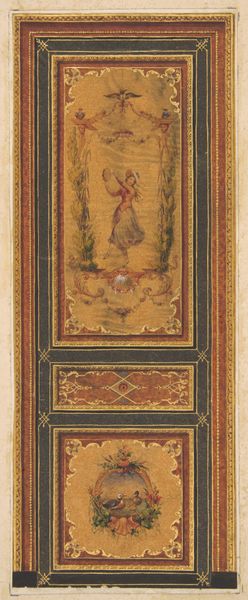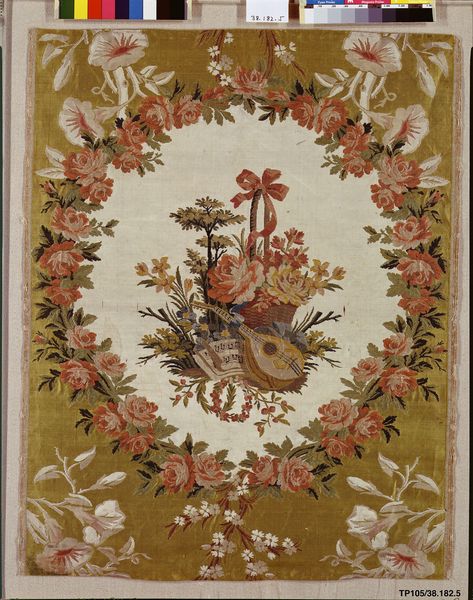
Wandkleed met springend hert tegen een achtergrond van bloeiende kastanjes c. 1902 - 1909
0:00
0:00
fibre-art, weaving, textile, mural
#
fibre-art
#
art-nouveau
#
muted colour palette
#
weaving
#
landscape
#
textile
#
figuration
#
decorative-art
#
mural
#
watercolor
Dimensions: length 132 cm, width 105 cm
Copyright: Rijks Museum: Open Domain
Curator: This tapestry, crafted by Willem Karel Rees between 1902 and 1909, is titled "Wandkleed met springend hert tegen een achtergrond van bloeiende kastanjes," or in English, "Tapestry with leaping deer against a background of flowering chestnuts." Editor: It has a serene, almost melancholic beauty to it. The muted blues and yellows evoke a sense of wistful contemplation. Curator: Indeed. The piece exemplifies Art Nouveau’s embrace of natural motifs. The stylized chestnuts, rendered with careful symmetry, create a repeating pattern which emphasizes a deliberate flattening of space. Editor: The deer itself—suspended mid-leap—becomes symbolic. It makes me consider fin-de-siècle anxieties around rapidly changing social and political landscapes. Hunting imagery had a prominent presence in visual culture across Europe, and the fleeing deer could be read as the artist responding to shifts in societal structures and even a comment on human interventions impacting the natural world. Curator: An interesting point, and not incompatible with an emphasis on the design elements at play. The subtle shading gives volume to the animal and depth within the pictorial frame. This layering contributes a great deal, especially when viewed as part of the overall composition with that elaborate border design, the two seem inseparable. Editor: Given the timeframe in which this work was conceived, I find myself considering the rise of socialist and labor movements that called into question systems of privilege, perhaps even as reflected by this isolated animal in the design. I imagine Rees as both deeply inspired by nature but also observant of broader social and political forces. Curator: Ultimately, "Tapestry with leaping deer" reveals how form and idea may coalesce to make the familiar resonate more richly, encouraging us to reconsider these dialogues around function, production, and access. Editor: And perhaps, appreciate the intersectional narratives woven into even the most seemingly straightforward image. It urges me to ponder how class, environmental concerns, and social pressures informed Willem Karel Rees' creative impulse and continue to affect our reception today.
Comments
No comments
Be the first to comment and join the conversation on the ultimate creative platform.
